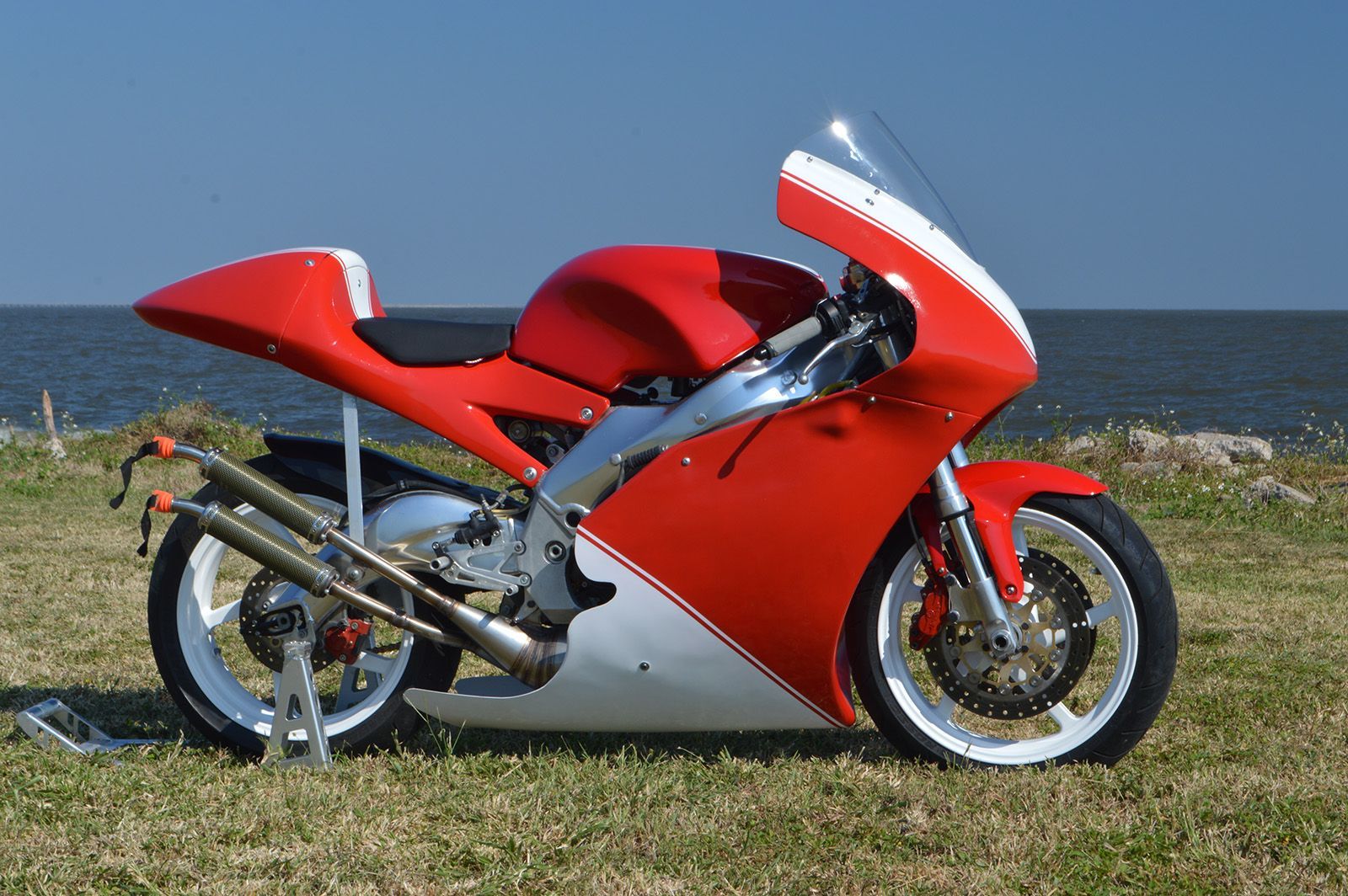Hailing from New Orleans, Louisiana, Brian is something of a track-day campaigner, and by his own admission a two-stroke addict. After searching far and wide, the opportunity arose to pick up a clean parts bin special—Simoncelli replica Aprilia RS250—and he couldn't say no.
Acquiring the Aprilia required letting another bike go and so 10 years to the day he purchased it, his beloved 2002 CBR600F4i went on the market. He thought he'd miss the CBR more, but the power band of an Italian two-stroke eased the pain of letting go.
It wasn't long before the limitations of the 249cc power plant became a factor and something with a little more oomph was required. The remedy was a YFZ350 Banshee engine, an easy choice given its popularity for RS swaps and readily available engine cradle adaptor kits.
Originally a quad motor based on the earlier RZ350 engine design minus the power valves and with much more aggressive porting. The Banshee was a very successful platform with a 20+ year run and a huge performance parts market that includes massive oversized cylinders that will scare the pants off nearly anyone. Much of the tech developed for these engines trickles down to the '80s RZ350's and a bit of it to the even earlier '70s RD's.
After extensive consultation with several Banshee engine builders, Brian settled on CP Industries 421cc Serval port mapped cylinders with a 4mm stroked crank and RZ350 transmission. To round it out he used a pair of Kehin PWK35 carbs, Zeeltronic Ignition, with Jim Lomas Pipes.
The RS rear engine mounts were removed and new bracket tig-welded to hold the Banshee engine.
While the chassis was out for fabrication work, all attention turned towards collecting the remaining parts necessary for assembly. To make a street-able machine from a Banshee, the transmission from an RZ is required as well as the ignition system and a charging system with lighting coils. Once these things were acquired, a custom wiring harness was made by incorporating RS, RZ and CBR1000 switch components.
He CNC cut a coolant outlet and fitted an aftermarket thermostat housing. His first fairing iteration contained all the necessary lighting specs for the road, but after careful consideration and respect for noise ordinance, he decided to abandon its street ambitions. He fabricated a gauge bracket, and fairing mount and bodywork hangers to mate with a late generation TZ250 bodywork kit.
As often happens, there were many bumps in the road while bringing this project to complete fruition. It took the better part of two years between 2015-17, but aside from suspension adjustments and general maintenance all he has to do is ride it.
Brian has a few thoughts to share regarding his experience and what one might expect should they attempt such a project themselves.
You have to be a builder at heart and love creating things. The most enjoyable part of this bike for me was its construction.
It is a very expensive proposition. I could almost buy a complete cup bike for what I have in the engine alone. You will never get your money out of it, so don’t even think of its resale value. This has to be a lifetime commitment or you’re in for a substantial loss. Trust me, you won't want to sell.
It is definitely a head-turner. At each track event, I’m asked: “What is that thing?”. You will have plenty of folks come by your pit to check it out. I’m usually the only two-stroke on the track.
The power to weight is amazing. It takes a deft touch to ride it as it explodes when you give it the throttle. You’ll have to reconfigure your riding as any gap between you and the rider in front closes rather quickly.
Aprilia really gave us a true GP chassis. It handles all this power with aplomb. For the 250 engine, it is way overkill.
If this story has piqued your interest and you want to know more check out Brians extensive build thread here.




Leave a comment